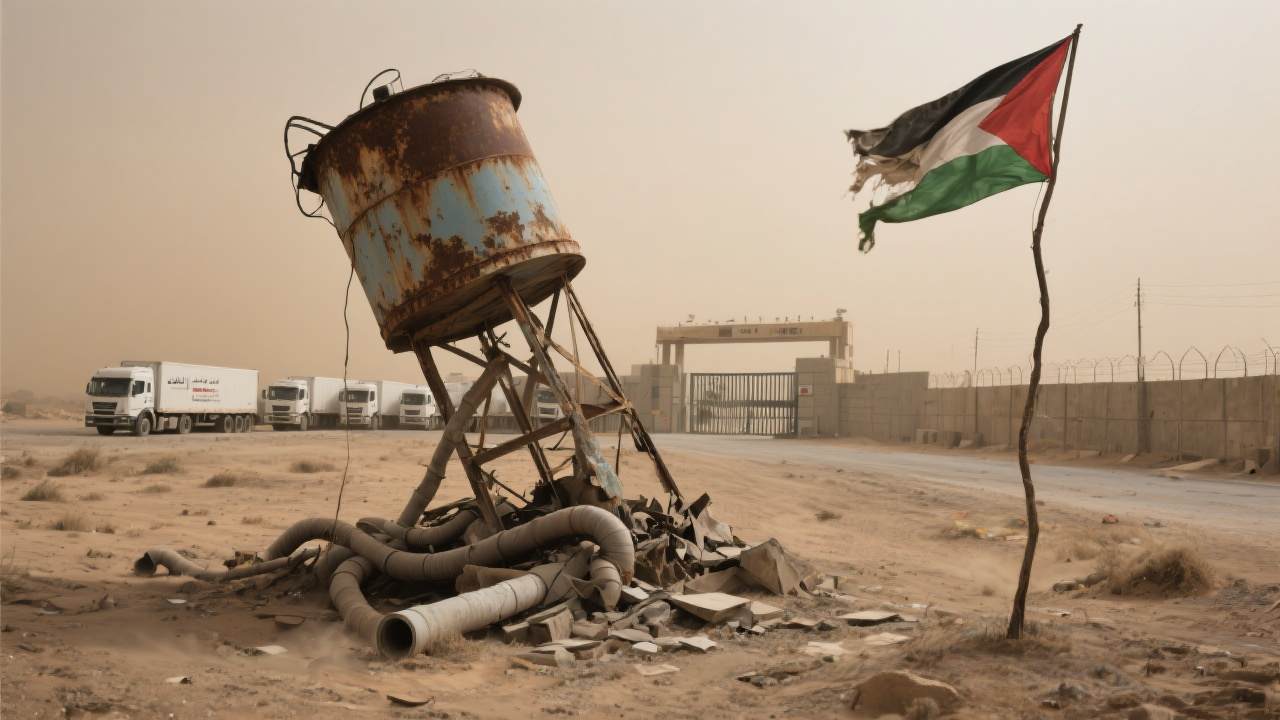
The Stark Reality on the Ground
The latest alert from the Integrated Food Security Phase Classification (IPC), a United Nations-backed initiative, is as blunt as it is chilling: Gaza is now living through the “worst-case scenario of famine.”
This isn’t a hypothetical or a distant risk. It’s a present-tense catastrophe, with starvation and malnutrition surging across the territory, and the world’s humanitarian system straining to keep up with the scale of need.
The IPC’s July 2025 report, based on data up to July 25, stops just short of a formal famine declaration, but the language is unambiguous. “Famine thresholds have been reached for food consumption in most of the Gaza Strip and for acute malnutrition in Gaza City,” the report states. The numbers are staggering: more than 20,000 children admitted for acute malnutrition treatment since April, with over 3,000 severely malnourished. Hospitals are reporting a spike in hunger-related deaths among children under five, with at least 16 fatalities since mid-July alone. In Gaza City, acute malnutrition among children jumped from 4.4% in May to 16.5% in early July, a quadrupling in just weeks, and similar patterns are playing out in Khan Younis and Deir al-Balah. The proportion of households experiencing extreme hunger has doubled since May, and in northern Gaza, 81% of families now report poor food consumption, up from 33% just three months ago. One in three people is going without food for days at a time, and nearly nine out of ten households are resorting to desperate measures: scavenging, taking dangerous risks, and skipping meals for days at a stretch.
How Did Gaza Get Here?
The roots of this crisis are tangled in the ongoing war between Israel and Hamas, which began after the October 7, 2023 attacks. Since then, Gaza has been battered by relentless bombardment, ground incursions, and a blockade that has choked off the flow of food, fuel, and medicine. The IPC report notes that 325,000 Palestinians have been newly displaced since mid-May, and 88% of the territory is now under evacuation orders or militarized zones. For many, there is simply nowhere safe to go. The collapse of local food production, exacerbated by a fishing ban and the destruction of farmland, has left markets empty. Wheat flour prices have soared by as much as 5,600% since February, and bakeries have shuttered for lack of fuel and ingredients. Even when food does make it into Gaza, it’s often not ready-to-eat and requires water and fuel to prepare, resources that are themselves vanishingly scarce. Aid distribution is a gauntlet: more than 1,000 people have been killed since late May while trying to access food, many near militarized distribution sites.
The Politics of Starvation
The humanitarian crisis has become a political flashpoint. Israeli officials continue to insist that there is “no starvation in Gaza,” but this claim is increasingly at odds with the evidence and with statements from international leaders. In a rare public split, U.S. President Donald Trump acknowledged the reality of “real starvation” in Gaza, promising to set up new “food centers” in the enclave. British Prime Minister Keir Starmer has recalled his Cabinet for an emergency meeting on Gaza, and UN Secretary-General António Guterres has called for an immediate and permanent ceasefire, as well as full, unfettered humanitarian access. Meanwhile, Israel has announced daily “tactical pauses” in military activity in some areas to allow aid in, but aid groups say these measures are insufficient and that the routes remain perilous. The UN and other agencies have repeatedly warned that airdrops and limited convoys cannot meet the overwhelming need, and that only a sustained, large-scale humanitarian response can avert further catastrophe.
The Human Toll
The numbers are numbing, but the stories behind them are wrenching. In the tent cities of Mawasi and Deir al-Balah, families line up for hours at charity kitchens, hoping for a single hot meal. Children, their hair brittle and skin stretched tight, wait in the dust. Aid workers describe scenes of parents skipping meals for days so their children can eat, and of families scavenging for scraps in garbage piles. The health ministry in Gaza reports that more than 60,000 people have been killed since the war began, with the majority of deaths among women and children. The true toll is likely higher, with many still buried under rubble. Two-fifths of pregnant and breastfeeding women are now acutely malnourished, and the collapse of health services means that treatable illnesses are becoming deadly.
What Happens Next?
The IPC’s alert is not just a warning, it’s a plea. “Immediate, unimpeded humanitarian access into Gaza is the only way to stop rapidly rising starvation and death,” the report says. The UN, World Food Programme, and UNICEF are calling for an urgent scale-up of aid, restoration of basic services, and above all, a ceasefire. The food is there, waiting at the borders: 116,000 metric tons, enough to feed a million people for four months, but the political will to let it in remains elusive. The risk of famine, as UNICEF’s Catherine Russell put it, “does not arrive suddenly. It unfolds in places where access to food is blocked, where health systems are decimated, and where children are left without the bare minimum to survive.” The world is watching Gaza’s nightmare unfold in real time. The question is whether anyone will act before it’s too late.
